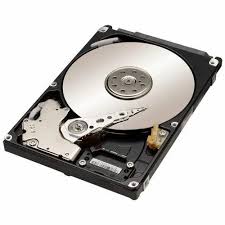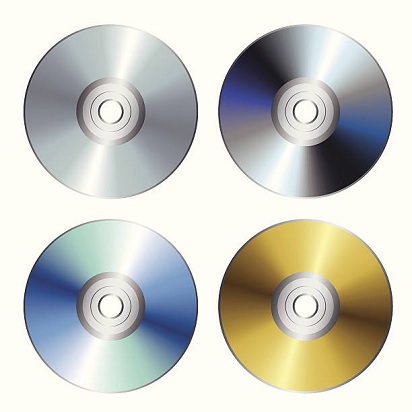AUXILIARY (SECONDARY) STORAGE DEVICES
Auxiliary memory is also known as Secondary Memory external memory or auxiliary or back up storage and also as immediate access storage (IAS). These are devices that hold the mass of information, which may be transferred for use during processing as and when required and for record purposes. As compared to primary or main storage, it has much larger capacity, but is not as fast. The secondary memory is virtually unlimited in size and is much cheaper than main memory. The most common types of auxiliary storage used on personal computers are floppy disks, hard disks and CD-ROM drives.
HARD DISK
Another form of auxiliary memory is a Hard Disk. The hard disk is the computer’s filling cabinet wherein the operating system and all data and program files are stored. When one switches on the computer, the operating system is automatically loaded into memory from the hard disk making the computer system operational.
The magnetic storage hard disk is based on a 50 year old technology. It has been and still is being improved rapidly. Hard disks continue to shrink in size, gain increased storage capacity and increased transfer speeds. Now this day hard disk is available in the market, large memory place with cheaper price.
A hard disk consists of one or more metal plates coated with a metal oxide material that allows data to be magnetically recorded on the surface of the platters. The hard disk platters spin at a high rate of speed, typically 5400 to 7200 revolutions per minute. The storage capacity of hard disks for personal computers range from 20GB to 2TB.

FLOPPY DISKS
With the advent of the personal computer, a way was needed to distribute software. The solution was found in the diskette or floppy disk, a small, removable medium so called because the early ones were physically flexible. The floppy disk uses a flexible plastic base in place of the more conventional rigid, metal-based disk. It is a thin, circular, flexible plastic disk with a magnetic coating enclosed in a square shaped plastic cabinet.
Once Floppy disks were 8 inches wide, they shrank to 5.25 inches, and today the most widely used floppy disk are 3.5 inches and it store 1.44 megabytes of data.
Data can be read and write in floppy disks.
The disk’s storage locations are divided into pie-shaped sections called sectors and each sectors is capable of holding 512 bytes of data.
The floppy stores data on both sides and has 80 tracks on each side with 18 sectors per track.
To use floppy disks most of the computers are contain a driver. In most floppy disk drives, the read-write head assembly is in actual physical contact with the recording material.
CDROM
The compact disk (CD) was introduced by Philips and Sony in 1980. The compact disk (CD) is a thin piece of clear polycarbonate plastic with a metal layer covered with a protective layer of lacquer, with the aluminium layer measuring 120mm in diameter. It is a small plastic disk with a reflecting metal coating, usually aluminium. Myriads of tiny indentations are burned into this coating.
A CD-ROM is a compact disc that used the same laser technology as audio CDs for recording music. In addition it can contain other types of data such as text, graphics, and video. The capacity of CD-ROM is 650 of data.
